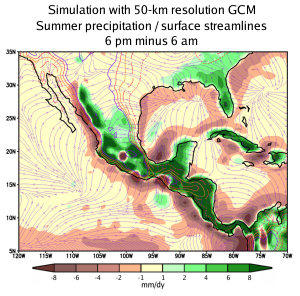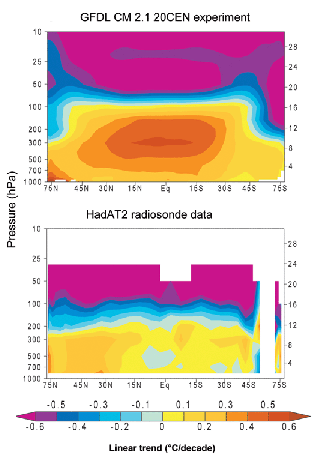Climate Diagnostics
Mission
To enhance our knowledge of the phenomena associated with, and physical processes contributing to, the stationary and time-varying states of the Earth's climate system, through analysis of data collected from various observational platforms, and experimentation with numerical climate models.
Current Research Topics
-
El Niño-Southern Oscillation
-
Monsoon Circulations
-
Model Diagnostics
-
Satellite Temperature Trends
-
Vertical Structure of Temperature Variations in Models vs. Observations
 |
El Niño-Southern OscillationInvestigate
the impacts of El Niño-Southern Oscillation (ENSO) on the variability
of the coupled atmosphere-ocean system on time scales ranging from
subseasonal to interdecadal, with emphasis on:
|
 Image: NOAA |
Monsoon CirculationsStudy the spatio-temporal climatological evolution of the principal monsoon
systems of the World, and the variability of these features on various time
scales. Phenomena of interest include:
|
 |
Model DiagnosticsAnalyze
the output from various experiments based on the current generation
of climate models developed at GFDL, with focus on:
|
 Image: NOAA |
Satellite Temperature TrendsDetermine the reliability of air temperature trends based on two leading satellite datasets via comparison with independently measured temperatures derived from radiosondes:
|
 |
Vertical Structure of Temperature Variations in Models vs. ObservationsCompare the details of the vertical variation in temperature trends from climate models with those derived from observed data. Address the following questions with regard to long-term changes:
|

